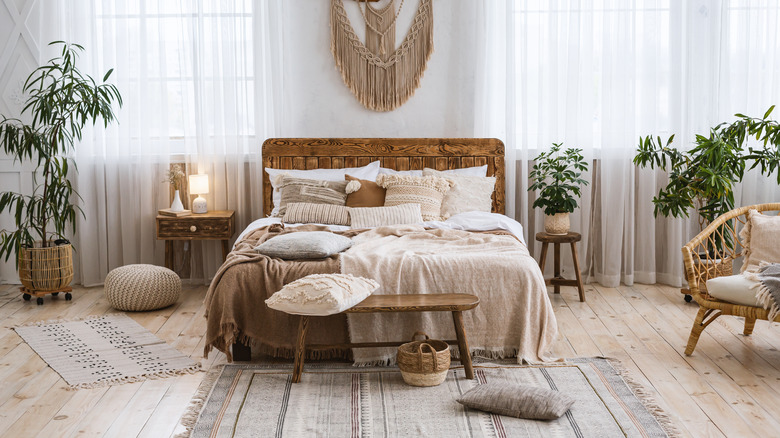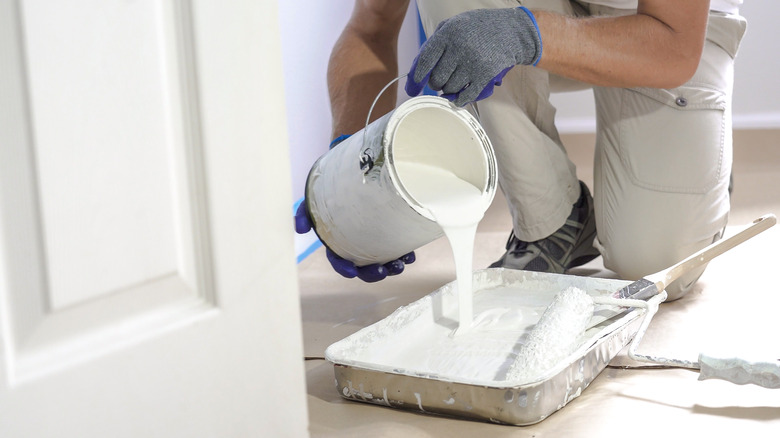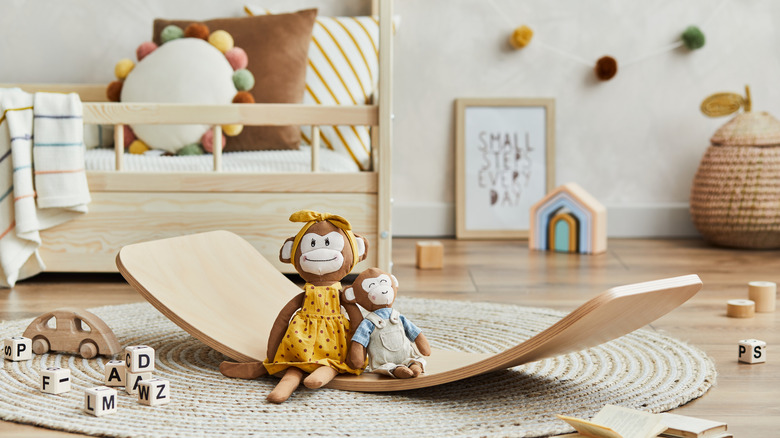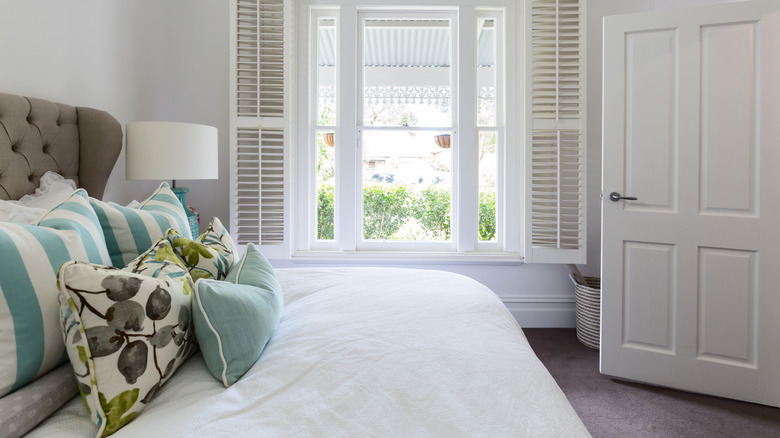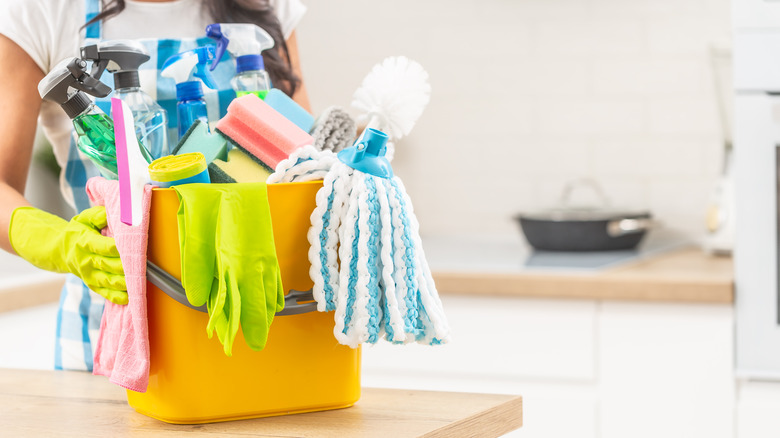5 Tips For Staging Your Bedroom Like A Pro
It is almost that time. You've agreed on a list price, picked a realtor, and you have decided that you want that top market value for your home. The next step is staging your home, and one of the most important spaces to stage is the bedroom. By choosing to do so, you are avoiding the mistake that millions of sellers make every year. Showing a property in its optimal condition is the fastest way to stand out in the market, drive traffic, and get a strong offer accepted.
Forbes notes that staging decreases a listing's time spent on the market by a third to even half the time of their non-staged counterparts. Three out of four buyers also report that they have an easier time envisioning themselves living in a space that is staged. So, what are the dos and don'ts of this practice? Well, we will break them down right now so that your house is the talk of the block and getting offers left and right.
1. Lighten and brighten
Light walls and bright staging always show best. It is ideal to paint your bedroom walls a warm white tone in order to create a room that feels airy but not sterile. Going with an option that feels too cold will give the home a clinical feel. Weather permitting, open the windows a bit to create an airy and unstuffy quality. If there are curtains, it is best that they are parted for showings. If there are shutters, turn them open. It is critical to optimize as much natural light in the space as possible, as that is one of the main factors that deters buyers (according to Business Insider).
Accent walls and furniture colors such as red, yellow, and purple are best avoided in the bedroom. These colors may be distracting to buyers, which is not ideal when trying to sell (via MHM Professional Staging). Choose lights and neutrals that complement your walls and floors. Going with options that are soft on the eyes will guarantee maximum market appeal (according to U.S News).
2. Keep it simple
When staging a bedroom, there are a couple of key components that will communicate function and form to the buyer. Firstly, make sure you have an appropriate size bed. If the room does not comfortably fit a king, it is okay to use a queen. Forcing the wrong size will make the room look smaller than it should (as noted by Elmens). How does one know? If there is minimal room for mobility or adding other pieces, it is likely too big.
A nightstand on each side of the bed is ideal for symmetry. A mirror across from the bed makes the room feel bigger. Avoid clutter at all costs. One plant is enough. One rug is enough. A couple of pieces of mild art to frame the room can help. But it is critical that the staging does not interfere with the flow or function of the room. Maintain a minimalist perspective when selecting pieces (via U.S. News).
Meet with a couple of different stagers prior to selecting one. Ask to look at their portfolio of work. Some stagers have a maximalist quality that may not always be ideal, especially with smaller properties.
3. De-personalize
That giant family portrait that you took in Maui is a treasure of a lifetime. And the Steelers memorabilia shows your support for your favorite team. But your buyers do not want to see any of it, especially in the bedroom. Kiplinger points out that it is difficult to predict what will turn off a buyer from a property. Personal beliefs, hobbies, and all visual clues of such matters should be eliminated from your bedroom in the staging.
The goal of staging is to allow the buyer to imagine what it would be like for them to live there, and the fewer personalized touches, the better. While this might sound a bit harsh, it is best to think of your home as a marketed product when staging it to sell. It is advised that you remove personal photographs and any religious iconography or materials that may indicate political affiliation.
4. Pick a palette and a style
If your Hamptons-style beach house is for sale, an ornate Mediterranean bed might be a bit odd. When people walk through the primary suite of a 19th-century Victorian estate, a Cloud Couch might throw them off. It is important to make sure that the staging and style complement the existing bones of the property. For a bedroom specifically, this typically means focusing on palette and style.
While the staging should be in line with the original architecture, it should never be too stylized. Typically, there is one central color that covers a majority of the space through the bed décor. Most likely, this would be the base neutral, like a beige or cream. The second color might be a slightly louder color that covers a fourth of the room. This may be rust, off-white, or olive. Lastly is the third color, often found in the bedroom rug, that is just meant to be sprinkled in for extra contrast and flavor. This concept is known as the 60-30-10 rule, according to Homedit.
5. Deep clean
Never underestimate the power of a deep clean when staging your bedroom. For example, certain floors show noticeably better after a deep clean, like terra-cotta tiling, lighter hardwood floors, and cork. Dust shows on these floors easily, and getting them cleaned before adding a rug to cover and refresh the center of the room.
Get the cobwebs out of the corner. Feather dust the nightstands. Vacuum your rug of choice. All of these small details make a huge difference when showing the property. Prospective buyers will articulate an indescribable freshness that will keep them coming back. And top it all off with some mild but inviting candles. This will give the tour a sensory experience and make it feel even homier. Agent Advice suggests that professional cleaning substantially increases the likelihood of the property selling quicker and at the asking price, as it is one less factor a buyer has to think about when negotiating price or repair requests on a purchase offer.
